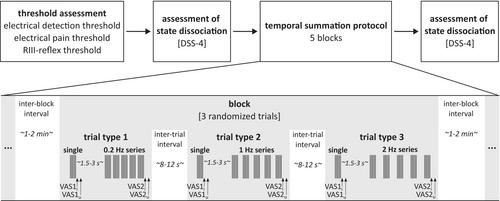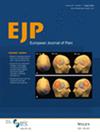Temporal Summation of Pain Unpleasantness Is Increased in Borderline Personality Disorder
Abstract
Background
Borderline personality disorder (BPD) is characterised by deficient regulation of emotions and is associated with reduced pain sensitivity, which has been related to self-injury and dissociation. BPD can therefore be used as a model to better understand pain-modulating mechanisms and their association with affective processing. However, studies assessing pain-modulating processes in BPD are sparse.
Methods
This study investigated temporal summation (TS) of pain intensity and unpleasantness, as well as TS of the RIII-reflex as a marker for spinal nociceptive processing in 24 participants with BPD compared to 24 non-clinical controls (NCC).
Results
Our main result showed that TS of pain unpleasantness, but not TS of pain intensity, was significantly increased in BPD compared to NCC, whereas we replicated higher pain thresholds in BPD compared to NCC. There was no significant correlation between pain threshold and TS of pain intensity or TS of pain unpleasantness in BPD. Moreover, correlative findings suggest a mutual dependence of spinal processing, temporal summation of pain and stimulus intensity in NCC, but not in participants with BPD.
Conclusions
The combination of reduced pain sensitivity in terms of heightened pain threshold and enhanced TS of pain unpleasantness might explain the so-called pain paradox, describing that individuals with BPD are both hyposensitive to acute pain and more prone to develop chronic pain. Different mechanisms might underlie heightened pain thresholds and increased TS of pain unpleasantness based on a complex interaction of altered ascending and descending mechanisms.
Significance Statement
The results of this study provide evidence that temporal summation of pain unpleasantness is increased in individuals with borderline personality disorder compared to non-clinical controls. These data suggest that altered pain perception in BPD is composed of several processes, extending beyond well-known pain insensitivity.


 求助内容:
求助内容: 应助结果提醒方式:
应助结果提醒方式:


